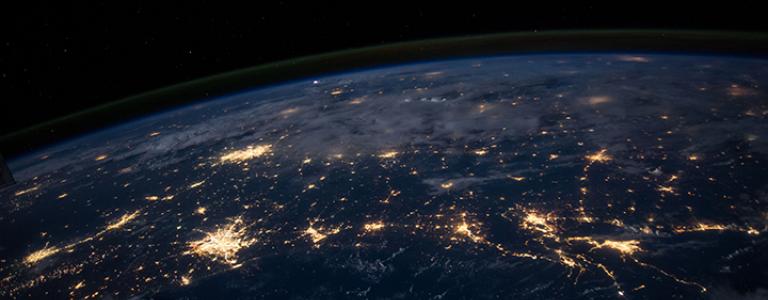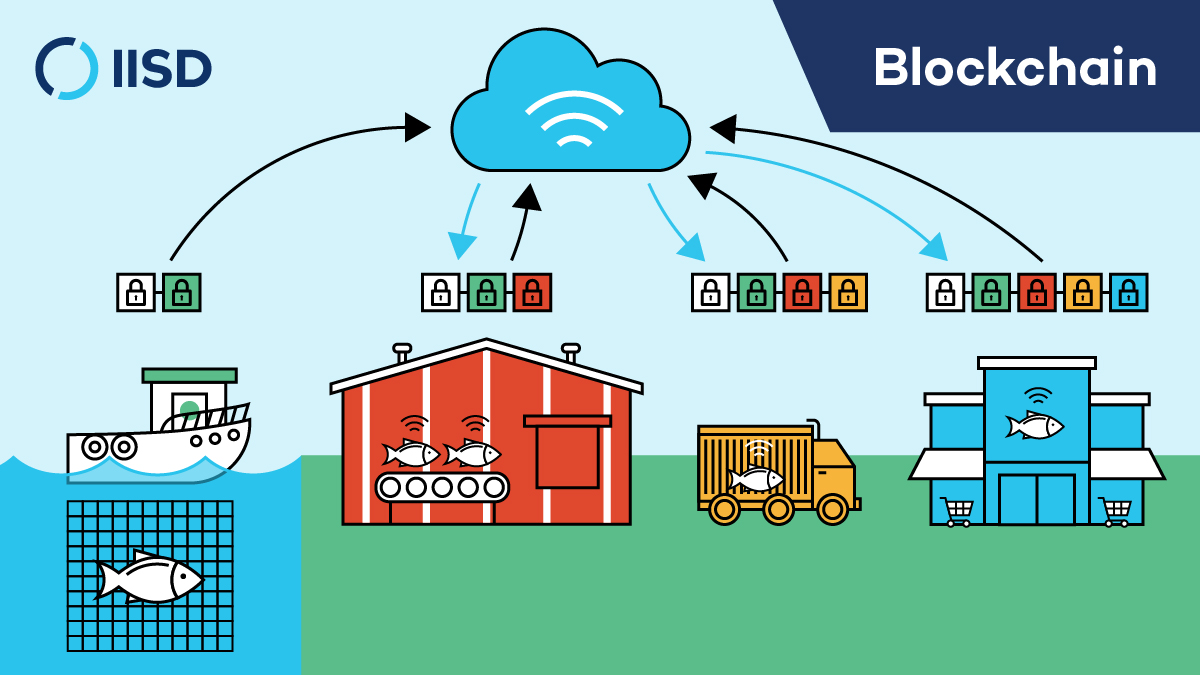Five Ways Blockchain Technology Can be Used for Resilience
Disruptive technology has vast applications toward increasing the resilience of individuals, communities and ecosystems. Here are five encouraging examples.
Many governments are investing in blockchain technology this year.
They are joining organizations like the United Nations and entire industries from healthcare to finance that see it as a major opportunity for innovation and economic development. Though it is best known for being used to track bitcoin, its use is promising beyond cryptocurrencies, including in contracts, certifications, land titles, medical records, personal data and more.
Distributed ledger technology allows the storing and exchange of assets and valuable information between two entities anywhere in the world in a secure, transparent and immutable way without the need for a trusted centralized authority to authenticate parties and validate transactions. It is a promising approach to transforming society and changing how we trust individuals and institutions.
The Ethereum blockchain, for example, enables the creation of “smart contracts” that self-execute once certain preconditions have been met, reducing the need for costly intermediaries while still ensuring that contracts and payments are respected. Given the many aspects of society that rely on some form of agreement between two parties, an abundance of applications is currently being conceptualized and developed for the sharing economy, lending, crowdfunding, insurances, games and even energy and environmental markets, through the act of tokenization (digitalization of assets).
Research is being conducted to further explore how this disruptive technology can be used to increase the resilience of individuals, communities and ecosystems. Here are five examples:
1. Access to financial services
Two billion people do not have access to financial services. Blockchain can empower individuals to become their own bank by setting up digital wallets that can store, receive and send money anywhere in the world, instantaneously, and without exorbitant fees. This could increase flows of investments to unbanked populations who would then have access to loans, credit and insurance. This application is already having an enormous impact on remittances, which represents up to half of household incomes in certain countries, and it can help in reducing gender inequality.
2. Providing identification
1.1 billion people do not have identification documents, critical to access healthcare, insurance, education, employment, phone/internet access, voting rights and property rights. Furthermore, no one’s personal information is invulnerable to being revoked, hacked, misused or sold without consent. A decentralized verification of credentials could allow individuals to own their digital identity and to securely carry it across borders and platforms, sharing only what is needed, when needed, and protecting their privacy and dignity in the process. Development and humanitarian efforts have already tested this with refugees on a private blockchain (meaning limited access to the information) to improve the effectiveness and accountability of aid delivery.
3. Tracking supply chains back to their sources
The sustainability and integrity of food and natural resource supply chains can be improved with the use of Internet of Things devices, tracking information every step of the way and logging it on a blockchain along with certifications and audit reports. Anyone could then access the data with a quick scan and verify the information for themselves. For example, one new project plans to track cobalt in the Democratic Republic of the Congo from the mines to the lithium-ion batteries used in smartphones and electric cars, with the goal of improving mining conditions through these verification layers. Similarly, blockchain is being tested to reduce illegal food production, contamination, recalls, fraud and waste. Farmers, under increased pressure to produce faster, cheaper and better-quality food, also stand to benefit from more accurate and rapid market information to be more competitive and negotiate better prices with buyers and brokers.

4. Monitoring environmental management
Sustainable management of our environment can become more efficient through a mix of technologies including blockchain and—with the right incentives—potentially even promote better results. As an example, Gainforest puts into practice the results from a recent study showing that incentivizing local farmers to not cut down trees could be an effective way to fight deforestation. In their proposed blockchain-powered Predictive Smart Contracts, farmers and communities become caretakers and have a stake in protecting portions of the Amazon rainforest. An artificial-intelligence-powered system analyzes satellite images and validates the conservation of the areas after a given period. This rapid assessment is then communicated to the blockchain, which automatically redistributes the monetary rewards to the caretakers that have successfully conserved their areas. This concept could be further extended to prevent overfishing, conserve mangroves and coral reefs, protect endangered species and reduce pollution.
5. Enabling energy hubs
Perhaps one of blockchain’s greatest contributions could be in the decentralization of the energy sector by facilitating the creation of community-based renewable energy systems that are sustainable and resilient to outages and price fluctuations. It turns consumers into prosumers (consumers who also produce energy), allowing energy to be directly sold and purchased between peers. SolarCoin, for example, plans to deliver incentives to generate 97,500 terawatt hours of solar energy over the next 40 years
***
Challenges remain, and it is often tempting to look for easy solutions to complex political and environmental problems. However, with proper regulations, blockchain has immense potential to become a tool for advancing sustainability and fostering resilience.
Further reading
You might also be interested in
How Can Blockchain Improve Sustainability in Mining?
Companies interested in sustainability and transparency are starting to use blockchain to trace materials back to their sources.
What Effect Will Automation Have on the Environment?
We know automation will change or eliminate jobs, but what impact will it have on energy use, natural resource use and the environment?
Citizen Science Fills Critical Gap in Monitoring Freshwater Resources
Most of us lack baseline data about our ecosystems, which makes it difficult to recognize changes and detect early warning signs. Enter citizen science.
Making Winnipeg a Smart City With New Technologies
We asked four members of our Winnipeg team how they would tackle some of Winnipeg’s most pressing issues: This is what they came up with.

